Author(s) |
Title and Abstract |
Lee, M., &
Walker, A.
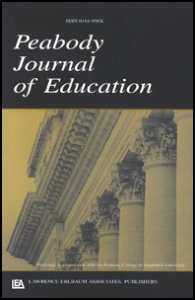 |
School leadership in international schools: Perspectives and practices. Peabody Journal of Education. https://doi.org/10.1080/0161956X.2018.1515828
Abstract:
Lee, Walker, and Bryant report the leadership practices associated with International Baccalaureate (IB) student achievement. Using a combined data set of Diploma Program (DP) exam scores and teachers’ survey responses about school leadership in Southeast Asia, they identify a pattern of the association between selected leadership practices and academic achievement, which confirms findings from research conducted in non-IB schools in different school systems; Strategic Resourcing and Encouraging Teacher Learning & Development are positively associated with IB exam scores whereas Monitoring Classroom Teaching & Curriculum is negatively associated with IB exam scores. They conclude that there are certain common features of leadership effects on student learning outcomes regardless of the status of international or local schools. As a school organization, IB schools share certain similarities with non-IB schools in terms of leadership practices and their effects on student achievement. Given that there is no existing empirical research on school leadership effects on student achievement in international school settings, the study contributes to the underresearched area.
In sum, this issue explores the complexity of leadership challenges, practices, and effects in international schools conceptually and empirically. We hope the papers collected here can act as a platform for further research into school leadership issues in international schools around the world and broaden the scope of research beyond local schools. We would like to thank the external reviewers for sharing their insights and critical feedback on the articles included in the issue.
|
Tang, H. H. H.
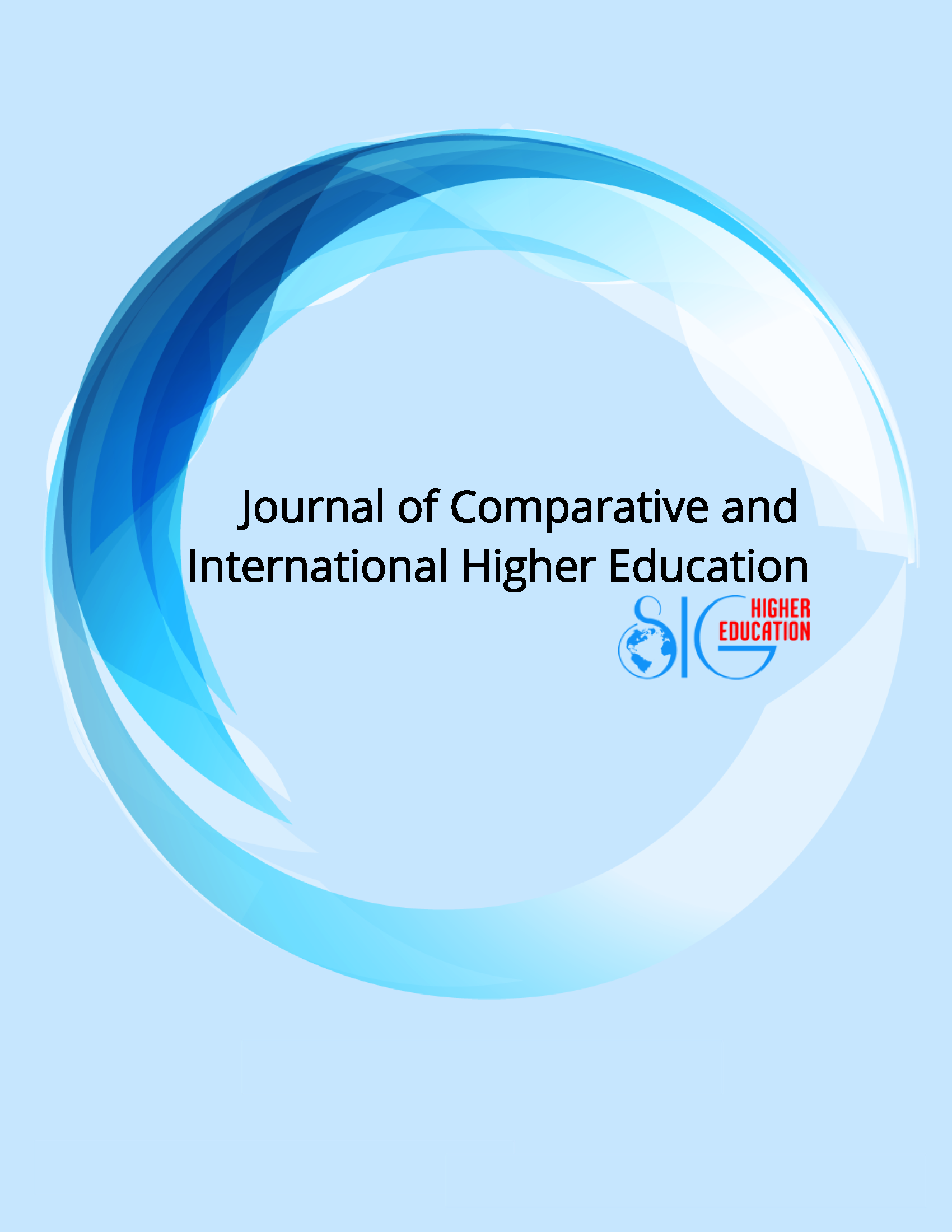
|
Academic profession, entrepreneurial universities and scholarship of application: The imperative of impact. The Journal of Comparative & International Higher Education. 10, 3-5. https://doi.org/10.32674/jcihe.v10iWinter.683
|
Tang, H. H. H.,
& Guillon, K.
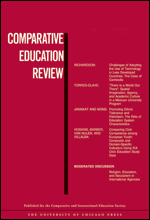 |
Teenager Vs. Superpower: A critical media review. Comparative Education Review. 62(4), 592-594. https://doi.org/10.1086/699709
|
Chen, J.
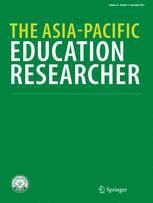 |
Efficacious and positive teachers achieve more: Examining the relationship between teacher efficacy, emotions, and their practicum performance. The Asia-Pacific Education Researcher. https://doi.org/10.1007/s40299-018-0427-9
Abstract:
This study will examine the relationship between pre-service teachers’ efficacy, emotion, and practicum performance score. A sample of 963 pre-service teachers was approached from four universities in China. This study used two self-reported instruments (The Teachers’ Sense of Efficacy Scale and the Teacher Emotion Inventory) and the participants’ practicum performance scores to test the relationship. Data were dealt using exploratory factor analysis, confirmatory factor analysis, and structural equation modelling. As expected, the structural model generally shows that pre-service teachers’ efficacy significantly predicts their practicum performance through their emotions. Teachers with a higher level of efficacy on Instructional Strategies positively predict their practicum performance through more pleasant emotions such as Love and Joy. By contrast, pre-service teachers with a lower level of confidence of Student Engagement tend to experience more unpleasant emotions (e.g. Fear, Sadness, and Anger) and gain lower practicum performance. One interesting link identified is between the efficacy factor Classroom Management and negative emotion Sadness. On the top of these, three emotion dimensions had been identified to relate to their practicum scores, that is, Joy, Love and Anger. The findings concerning the three constructs can provide a new perspective for teacher effectiveness research by taking teacher emotion and efficacy into account. |
Tang, J. J.
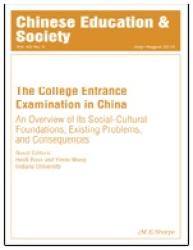 |
The Professional development of Macau school principals: Making the most of the best. Chinese Education and Society, 51(5), 307-323.
Abstract:
The author's aim is to explore the school principal training and development landscape in Macau. The continuities and changes in the professional development of principals in Macau over the last two decades are identified. Using Huber’s theoretical framework, key pre- and in-service policy documents from 1993 to 2017 that have shaped the development are examined to better understand principal development and assess the role of the government in determining the aims, methods and substance of the development. The author provides a concise description of the status quo of the professional development of principals in Macau, particularly focusing on providers, orientations, conceptions, and multiple approaches. She argues that although training efforts are intended to gradually increase, there is a lack of hierarchical classification guidance and systematic establishment; limited formal evaluation being done to evaluate the effectiveness of the development programs while coping with the educational changes, the government still sticks to the traditional way and thus the training provided sometimes cannot keep pace with the current situation. However, there are some things that the government can do to improve the current situation. The primary concern should be to focus on providing effective transitions into the principal role, improving the assessment system, and establishing a systematic knowledge base in the years to come. |
Guo, W.,
Lu, J., &
Qian, H.
 |
Principal instructional leadership: Chinese PIMRS development and validation. Chinese Education and Society, 51(5), 337-358.
Abstract:
Considered as the most noticeable leadership approach in improving teaching and learning capacities of schools, instructional leadership begins attracting another wave of research attention. However, empirical evidence on instructional leadership practice of Chinese samples is rare in both English and Chinese literature, leaving the question of how Chinese principals practice instructional leadership largely unanswered. The authors aimed to develop a Chinese version of the Principal Instructional Management Rating Scale (PIMRS). This study consists of three phases. In phase 1, PIMRS was adapted based on Qian et al.’s (2017) recent work on instructional leadership practices in China, and then semistructured interviews with 15 primary school principals were conducted to verify the dimensionality and items of the adapted PIMRS. In phase 2, based on data collected from 159 principals and teachers, a Chinese PIMRS was validated and further modified. In phase 3, drawing on survey data collected from 1,100 principals and teachers, construct-level, item-level, and criterion-related validity of the final revised Chinese PIMRS was established. The results provide strong evidence that the adapted PIMRS can better represent Chinese principal instructional leadership. |
Wang, M., &
Ho, D.
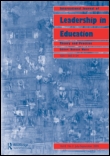 |
Making sense of teacher leadership in early childhood education in China. International Journal of Leadership in Education. https://doi.org/10.1080/13603124.2018.1529821
Abstract:
The purpose of this paper is to offer a theoretical discussion on teacher leadership in early childhood education (ECE) in Chinese contexts. Since 2010, the Chinese government has initiated a comprehensive education reform in ECE, with strategies for developing teacher leadership and promoting education quality. However, at the school level there is a lack of leadership preparation and development, along with a gap between policy initiative and its implementation. How to narrow this gap between policy and practice in teacher leadership has become a critical issue for ECE in China. This paper suggests that ‘formal role or informal role’ and ‘role or practice’ are important dimensions of teacher leadership in a Chinese, policy-driven context. In this regard, it is worth exploring how teacher leadership is conceptualized and enacted in the process of quality improvement and related contextual factors. In doing so, an agenda could be identified for future research, contributing to theories on the development of teacher leadership in the global discourse.
|
Guo, W., &
Lu, J.
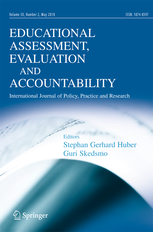
|
Assessing instructional leadership from two mindsets in China: Power distance as a moderator. Educational Assessment, Evaluation and Accountability. https://doi.org/10.1007/s11092-018-9287-3
Abstract:
The past decade has witnessed growing interest in the study of the perceptual differences between principals and teachers, and a number of inconsistent results have been documented. This study examined differences between principals’ and teachers’ perceptions of principal instructional leadership and tested the hypothesis that power distance (PD) moderates the differences between the two parties. Based on survey data collected from 132 Chinese principals and 1708 teachers, the results revealed no significant differences in the total and dimensional levels of instructional leadership; however, PD moderated the perceptual differences. Specifically, when the principals reported a low PD, their self-ratings of their instructional leadership were higher than the teachers’ ratings, and conversely, when the principals reported a high PD, their self-ratings were lower than the teachers’ evaluations. However, the result was contrary to the hypothesis when PD was reported by teachers. The theoretical and practical implications are discussed. |
Wu, Z., &
Chen, J.
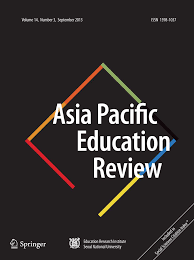
|
Teachers’ emotional experience: Insights from Hong Kong primary schools. Asia Pacific Education Review.
https://doi.org/10.1007/s12564-018-9553-6
Abstract:
This study aims to understand teacher emotions through interviewing 28 primary teachers in Hong Kong. The study employed content analysis to analyze the data. The results were allocated to three dimensions of teacher emotions—student and learning, teacher and teaching, and the contextual factors. These teachers described 78 emotions of which approximately an equal number were positive and negative. Emotions relating to the student and learning dimension are the most intense, followed by those in the teacher and teaching and contextual factor dimensions. Data also indicated that teachers can hold positive and negative emotions simultaneously (e.g., happy yet pressurized by child’s unconditional trust) and can suffer from paradoxical emotions (e.g., regarding education reform). Teachers demonstrated different ways to manage emotions contingent on their demographic background. Given the powerful role that emotions play, recommendations for including teacher emotion education in both initial teacher education and professional development have been proposed accordingly. |
Zhao, Y.,
& Ko, J.
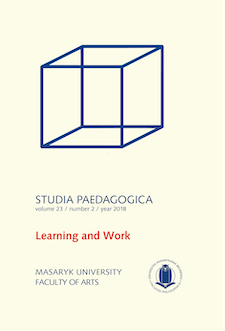
|
Workplace learning in the professional development of vocational education teachers. Studia Paedagogica, 23(2). https://doi.org/10.5817/SP2018-2-4
Abstract:
Workplace learning is defined variously and plays a pivotal role in the enhancement of vocational education teachers' practices. Based on a comprehensive desk-based review of the related literature, this article defines and discusses the concept of workplace learning and its contribution to vocational education teachers' continuous professional development. The article demonstrates explicitly that the existing theoretical frameworks guiding workplace learning are mainly drawn from different learning theories. Among these, Illeris's (2011) learning model is found to be theoretically sound and to provide a foundation to be extended to hypothesise about the relationships of various key concepts discussed in association with the workplace learning of vocational education teachers. Three lines of arguments have been identified for providing support to Illeris' model: (1) the significance of workplace learning practices, (2) individual and social aspects of learning situations, and (3) individual and social levels of workplace learning. In addition, based on Illeris's model and related literature on teacher professional development, the article proposes a workplace learning model for vocational education teachers and evaluates its implications for vocational education teachers' professional development, work identities, and transfer of knowledge into practice in the working situation in vocational education and training. |
Gu, Q.,
Day, C.,
Walker, A., &
Leithwood, K.
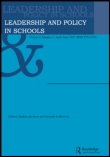 |
How successful secondary school principals enact policy. Leadership and Policy in Schools, 17(3), 327-331.
Abstract:
Schools in many countries across the world have undergone considerable reform over the past two decades and their principals have had to learn to manage increased volumes of government educational-policy initiatives designed to raise standards of teaching, learning, and academic outcomes for all students. Although these initiatives are seen by governments as a means of building human, economic, and social capital in increasingly competitive and socially turbulent global environments, there are continuing concerns over how effectively they are being implemented by school leaders and teachers. This special issue provides new knowledge about how leaders of schools designated as “good” and “outstanding” in England, and high-performing schools Hong Kong, achieve and sustain school improvement. This includes but goes beyond the claims so often made by many ideologically driven policy-enactment studies that neoliberal policy agendas necessarily result in cultures of oppression and compliancy in all schools. On the contrary, we found that in these successful schools, leaders were values driven, building structures, cultures, and relationships that reflected their deeply held humanistic educational values. In these schools, external policy was only one of several considerations and its policies were incorporated only when they were able to be aligned with their values.
By using a longitudinal (2005–2014), mixed-methods design to investigate the interface of reform at macro (country), meso (school), and micro (classroom) levels, the research investigated how government reforms (mandatory and non-mandatory) were received and mediated by principals and senior and middle leaders in improved and effective schools serving communities of contrasting socio-economic advantage. “Success” was defined as characterising those schools that had shown sustained improvement in student academic outcomes over time (measured by pupil progress and attainment outcomes between 2003 and 2012), other key aspects of school improvement (measured by national inspection results), and reputation. In these successful schools, policies were conceptualized as “opportunities,” resources that leaders skillfully weaved into their processes of school improvement to create educationally equitable, and values-based “landscapes of success.” Thus, the project did not focus on policy analysis, finding that this was only one of the contexts that informed the ways in which principals led their schools. |
Bryant, D. A.,
Ko, J., &
Walker, A.

|
How do school principals in Hong Kong shape policy. Leadership and Policy in Schools, 17(3), 345-359.
Abstract:
This article draws on data from cases of high-performing and improving schools in Hong Kong. Semi-structured interviews were conducted with principals, middle leaders, and senior teachers to identify key policies and steps taken for their enactment, and to solicit interpretations of the policies. Principals were found to actively select, prioritize, and emphasize policies based on clearly articulated values. These values-led and contextually informed decisions formed the basis for redesigning the school organization and leadership structures, allocating resources, and aligning multiple initiatives to policies. School-based and mandated policies worked in synergy, and school principals responded rather than reacted to mandates. |
Armstrong, P.,
Ko, J., &
Bryant, D. A.

|
Values-Driven leadership through institutional structures and practices: How successful schools in England and Hong Kong “absorb” policy. Leadership and Policy in Schools, 17(3), 360-372.
Abstract:
This article analyzes how principals of high-performing secondary schools in England and Hong Kong establish structural arrangements aligned to their core values as educators. Such values-driven structures provide a platform by which principals create the conditions in which policy and reform can be managed and absorbed without compromising the core purpose and contextual priorities of these schools. The findings reveal how the participating school principals have carefully embedded and institutionalized these structures within the cultures of their organizations as part of a multilayered approach to leadership. |
Gu, Q.,
Sammons, P.,
& Chen, J.
 |
How principals of successful schools enact education policy: Perceptions and accounts from senior and middle leaders. Leadership and Policy in Schools, 17(3), 373-390.
Abstract:
This article investigates, from the perspective of senior and middle leaders, how secondary principals in England lead their schools to achieve sustainable performance despite policy shifts. Empirical data were drawn from structural equation modeling (SEM) analyses of a questionnaire survey from 309 effective and improved secondary schools in England and longitudinal interview data from a subsample of four case-study schools. The research suggests that what the principals were perceived to be doing successfully was to use policies as opportunities—purposefully, progressively, and strategically—to regenerate coherent cultures and conditions which support the staff to learn to renew their practice. |
Szeto, E.,
Cheng, A. Y. N.,
& Sin, K. F.
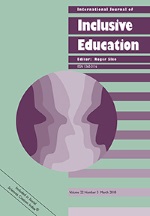
|
Still not inclusive? A critical analysis of changing the SENCO policy in a Chinese school community. International Journal of Inclusive Education. https://doi.org/10.1080/13603116.2018.1492642
Abstract:
Little research has been conducted to gain deeper understandings of policy change of piloting special educational need coordinators (SENCO) in a Chinese education community. In response to the change in policy towards regularisation of the SENCO, we examined a trajectory of policymaking for SEN support in Hong Kong’s integrated education. Critical discourse analysis as a discursive method of analysing the local SEN practices in relation to the international policy development was adopted. The key questions are: What is the difference between this Chinese integrated education and international policy development for inclusion? What effects of the pilot SENCO have emerged in the policy and media texts in the Chinese integrated education? What recommendations can be derived to inform the regularisation of SENCOs in ordinary public schools? The findings shed light on the conceptual discrepancy between integrated and inclusive education in the policymaking. The economic considerations and administration accountability of the pilot SENCO affected the regularisation. As reflected in this Chinese integrated education, we also discuss the implications of changing the SENCO policy for quality SEN support in schools. |
Choi, T. H., &
Walker, A.
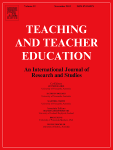
|
A heuristic model for tailoring teacher development to educational reforms: Focusing on ambiguity and conflict generation. Teaching and Teacher Education, 74, 72-84.
Abstract:
This paper aims to contribute to the theorisation of effective teacher development (TD) provision in a reform context. Based on a literature review, the paper identifies key reform features, i.e., ambiguity and conflict generation, that shape teachers' engagement with pedagogic reforms and suggests a framework for designing TD programmes that address reform-specific needs. It then explores the utility of this heuristic framework through an in-depth case study of implementation of, and perceptions about, eight reforms in two schools in Hong Kong. The case study confirmed that customising the TD provision to perceived reform characteristics could contribute to teachers' positive perceptions of and experience with reforms. |
Walker, A.,
& Qian, H. Y.
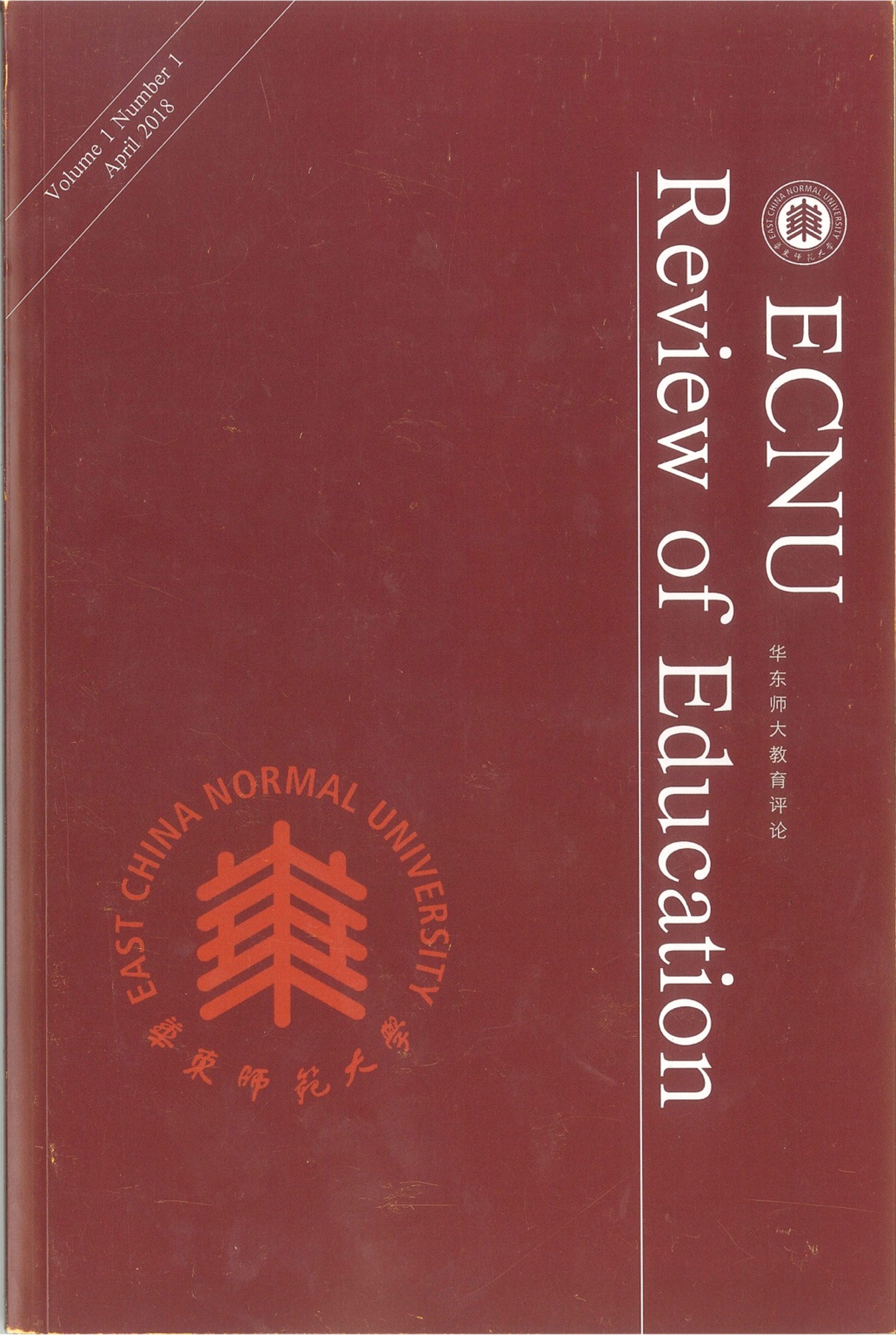 |
Exploring the mysteries of school success in Shanghai. ECNU Review of Education, 1(1), 119-134.
Abstract:
The purpose of the paper is to discuss some of the mysteries around the much-touted recent success of school education in China and to explore some of the key conditions that may underpin the success. The paper discusses four mysteries around education success in China. It argues for the development of a fuller and more contextualized perspective to view the success. The paper further suggests that neither of the four general conditions for success-values, reform, leadership or teaching approaches-taken alone, can explain pathways to success. The paper provides an original explanatory description of the mysteries of education success and underlying conditions. This paper helps fill a gap in Western understanding of the "why" and "how" of school success in China. |
Bryant, D. A., Walker, A.,
& Lee, M.

|
Successful leadership in international schools: Lessons from the Asia-Pacific. Australian Educational Leader, 40(1), 26-29.
Abstract:
Across the Asia Pacific, the number of international schools are rapidly rising - many of these schools include large multi-ethnic populations. Typically, they aspire to offer an nternational’ education and university preparation. They often adopt International Baccalaureate (IB) programs to accomplish these aims (Bryant 2018). Over 180 Australian schools now offer IB programs (IBO 2017).
Research shows that effective instructional leadership is essential to implement IB programs successfully (Lee, Hallinger & Walker 2012). This fits with broader insights that leaders influence student learning by shaping teachers’ working conditions and professional relationships and designing schools’ organisational structures (Day et al. 2010). Although research has identified the external and organisational (Bryant et al. 2016; Lee et al. 2016; Rizvi 2014) challenges faced by international school leaders, there is little research on the impact of leadership on student outcomes in IB schools.
This article reports research findings around leadership in successful IB international schools. Leadership here refers to that exercised by schools’ senior leadership teams (SLT). Although SLT’s configurations vary across schools, they generally include the Heads of School (i.e. principals), heads of the different sections (e.g. primary, middle and secondary), and associate principals, or their equivalents. The article identifies leadership practices quantitatively associated with high student outcomes and illustrates these using case study data. Schools were classified as successful based on their overall performance on the International Baccalaureate Diploma Programme (IBDP). After briefly introducing the context of leadership challenges in the Asia Pacific region and sketching the methodology used, we suggest three data-driven propositions to describe the practices leaders employed to influence student learning outcomes. |
Bryant, D. A.
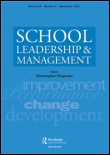
|
Conditions that support middle leaders’ work in organizational and system leadership: Hong Kong case studies. School Leadership and Management. https://doi.org/10.1080/13632434.2018.1489790
Abstract:
This study builds on research which contends that just as effective principals must lead across a broad purview of responsibilities in order to build successful schools, so too must middle leaders. Decentralisation of school management has resulted in an expansion of school principals’ responsibilities, contributing to a further distribution of leadership responsibility to middle leaders. This conception of middle leadership requires a shift in understanding of the nature of middle leaders’ work. There is vast potential for middle leaders to contribute to their schools beyond subject administration, yet the research base yields limited insight on such work and on how middle leaders can be supported to accomplish it. This research finds that middle leaders who expand their leadership responsibilities do so in contexts that utilise school mission, policy enactment and organisational design as platforms for enhanced middle leadership. |
Chen, J.,
& Guo, W.
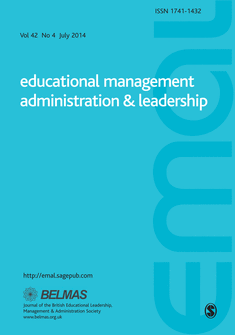 |
Emotional intelligence can make a difference: The role of principals’ emotional intelligence on teaching strategy mediated by principals’ instructional leadership. Educational Management Administration & Leadership, https://doi.org/10.1177/1741143218781066
Abstract:
This paper reports on a study that examined the effect of school principals’ emotional intelligence, and their instructional leadership, on improving teachers’ instructional strategies. A sample of 534 primary teachers from 54 primary schools in China was approached and invited to respond to a questionnaire. Structural equation modelling identified the relationships between three constructs – Wong’s Emotional Intelligence Scale, the Principal Instructional Management Rating Scale, and the Instructional Strategy Scale – and between the dimensional levels. The study confirmed the theoretical proposition that principals’ EI and their instructional leadership behavior are influential factors with regard to teachers’ instructional strategies. The findings are of particular interest because they include the element of emotional intelligence for improvement of teaching practice and evaluating the effectiveness of the principal. |
Lee, T.,
Cheng, Y. C.,
& Ko, J.
 |
Curriculum reform with a school-based approach: Intellectual, structural and cultural challenges. School Leadership & Management, 38(3), 278-301.
Abstract:
Curriculum reform with a school-based approach is often assumed to offer schools and teachers autonomy at the site level, thus enabling them to develop a school-based curriculum and pedagogies to better fit the needs of students. Over the past decade, school-based curriculum development in Hong Kong has encountered issues that deserve worldwide attention and discussion. By reviewing the experiences of two schools in Hong Kong and drawing on international evidence, this study identifies key challenges and difficulties in school-based curriculum reform in three areas. Intellectually, there is a lack of a strong and broad shared knowledge base for curriculum development. As a result, most school-based curriculum initiatives have been piecemeal, fragmented and shallow. Structurally, many teachers have wasted time ‘re-inventing the wheel’ when developing school-based curricula. This effort has left them without sufficient time and energy to be effective in teaching. Culturally, reliance on school management to steer school-based reforms has prevented the development of a new culture in which teachers have the autonomy to make changes in their daily practices. Without cultural changes, curriculum reforms are not sustainable or effective. This study proposes a cooperative platform that integrates the strengths of central intelligence and school-based initiatives to maximise support for curriculum development at the teacher, school-site and system levels.
|
Szeto, E., &
Cheng, A. Y. N.
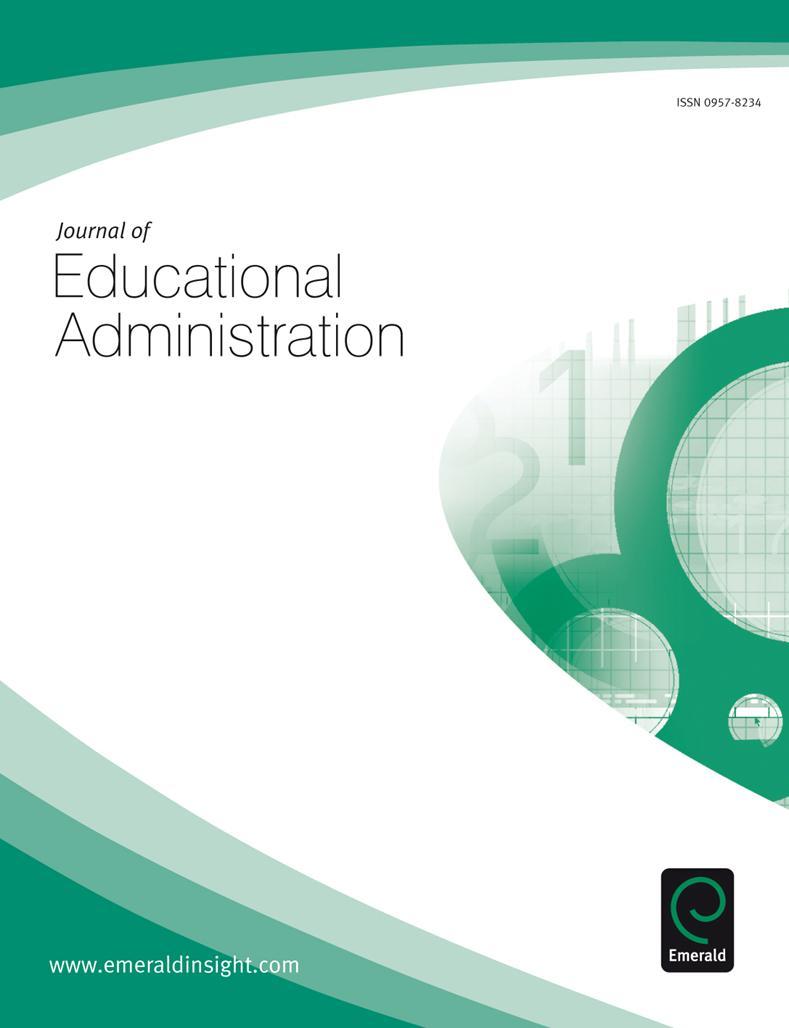 |
How do principals practise leadership for social justice in diverse school settings? A Hong Kong case study. Journal of Educational Administration, 56(1), 50-68.
Abstract:
Purpose – Empirical research on leadership for social justice is in progress in many parts of the world. The purpose of this paper is to explore principals’ school-leadership journeys in response to social-justice issues caused by specific contextual changes at times of uncertainty. It seeks to answer the following key questions: What social-justice issues do principals identify as arising from their schools’ transformation due to contextual changes? How do principals practise leadership for social justice in response to these contextual changes at different levels?
Design/methodology/approach – This paper is based on qualitative data from a cross-case study of two principals’ school-leadership journeys. The authors pay particular attention to the understanding of leadership for social justice grounded in principals’ efforts to foster equality in learning development for a diverse student population.
Findings – Timely adverse conditions may be required to foster leadership for social justice in schools. The principals reacted to contextual changes at several levels, planning and implementing innovative and flexible interventions to ensure equality in students’ learning development. These findings contribute to international accounts of educational leadership.
Research limitations/implications – This study of leadership for social justice in schools is contextually specific. Therefore, more empirical comparisons of school leadership are required in future studies, as principals’ practices vary between education settings.
Originality/value – This paper offers insights into the evolution of leadership for social justice in schools in response to contextual changes. Principals’ leadership strategies can be reoriented and their actions reshaped to overcome threats to social justice in schools. Accordingly, although leadership for social justice in school communities is culturally and pedagogically inclusive, it is also socially distinctive. |
Chen, J., & Brown, G.
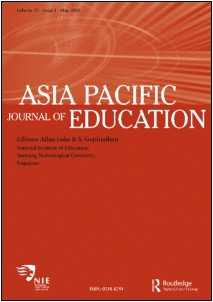
|
Chinese secondary school students’ conceptions of assessment and achievement emotions: Endorsed purposes lead to positive and negative feelings. Asia Pacific Journal of Education, 38(1), 91-109.
Abstract:
Student perceptions of the purposes of assessment have been shown to be significant predictors of self-regulated learning. Their relationship to achievement emotions is less well understood. This paper reports a survey study of Chinese middle and high school students (N = 1,393) self-reported conceptions of the purpose of assessment and their achievement emotions using inventories with previously developed Chinese versions. While pre-existing models were not replicated, exploratory techniques developed well-fitting measurement models for each inventory and a structural equation model showed that significant variance in achievement emotions was elicited by certain beliefs about assessment. Positive emotions of pride and enjoyment depended primarily on conceptions that assessment (1) contributed to student moral and skill development, (2) was accurate, and (3) was not for evaluating schools or teachers. Negative emotions of anger and shame depended primarily on conceptions that assessment was (1) for evaluating schools and teachers and (2) not for improving teaching and learning. Thus, student emotional responses to assessment in China logically depend on beliefs that assessment reliably relates to developing their own learning, skills, and moral character. |
Lu, J., & Hallinger, P.

|
A mirroring process: From school management team cooperation to teacher collaboration. Leadership and Policy in Schools. 17(2), 238-263.
Abstract:
In this study, we examine how cooperation and constructive controversy evidenced within school management teams (SMT) relate to collaboration among teachers. Dyad survey data was collected from SMT members and teachers at 32 primary schools in Hong Kong. Results of multilevel regression analysis indicated that cooperation among SMT members was positively related to teacher collaboration. Moreover, constructive controversy within SMTs mediated the path and contributed additional variance explained in school-wide teacher collaboration. These findings affirm that the leadership dynamics of SMTs in Hong Kong primary schools do appear to have a positive influence on potentially important school-level conditions. |
Lam, B. H.
 |
Teaching innovation in higher education: Background, development and emerging practices. Research Oriented Teaching: Learner-Centred Teaching Innovation Case Studies, 1, 1-12. |